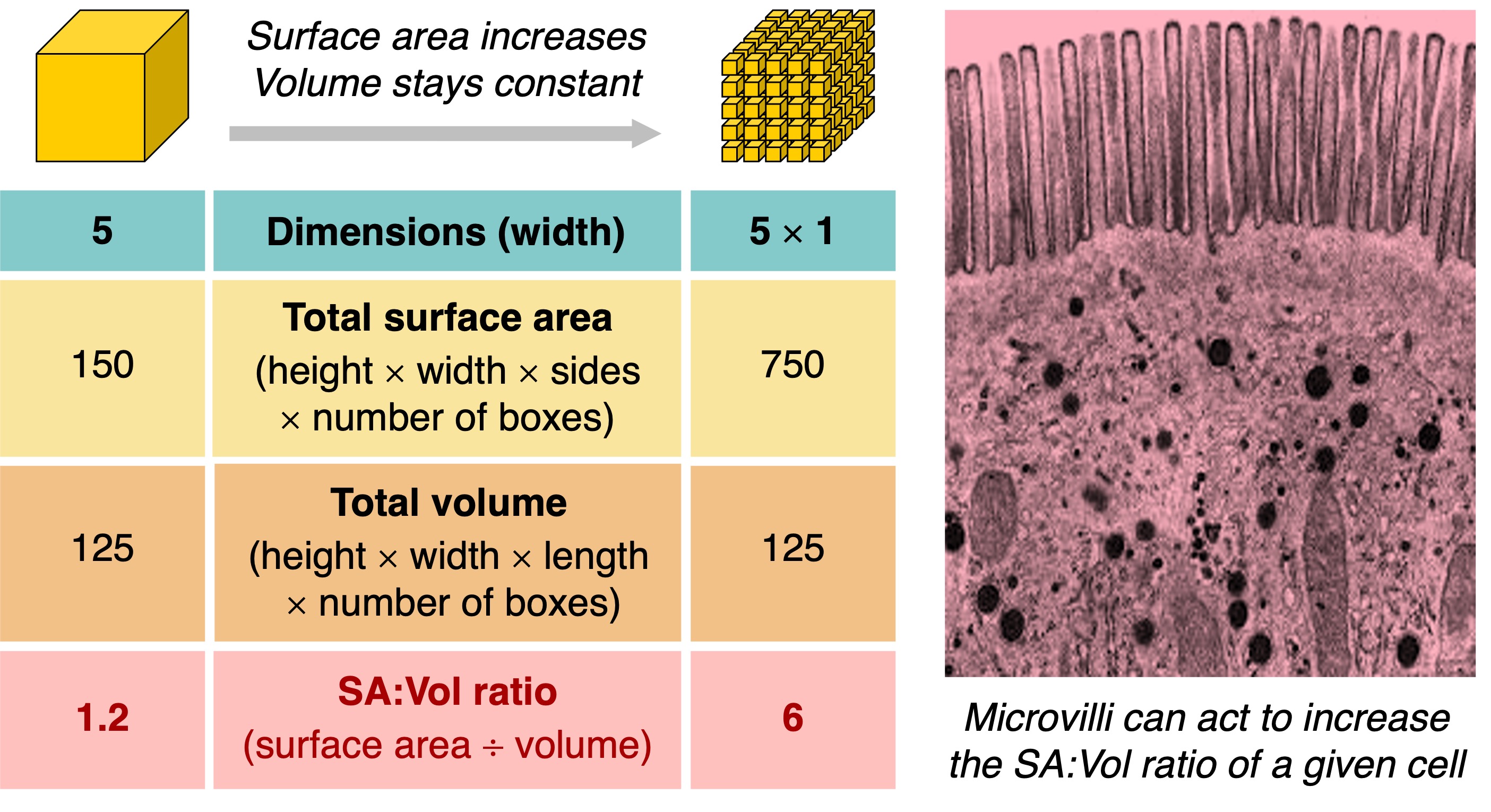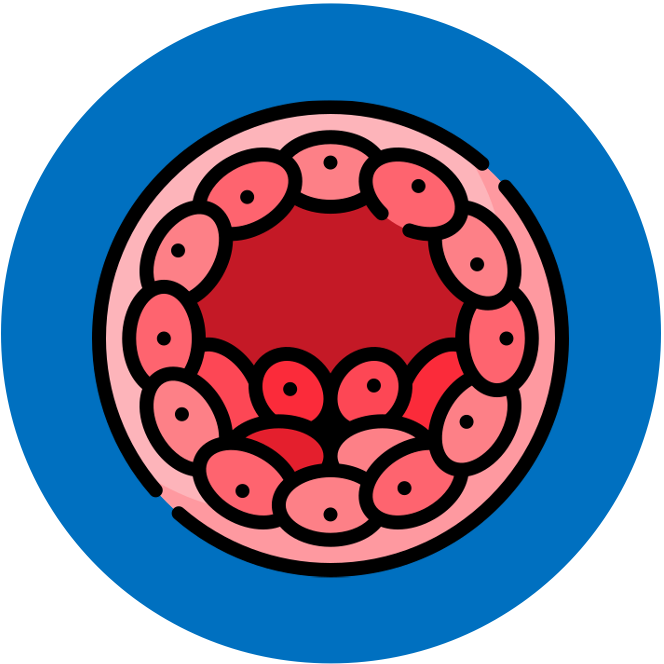

Cell Size
Cells need to produce chemical energy (via metabolism) to survive and this requires the exchange of materials with the environment
-
The rate of metabolism of a cell is a function of its mass / volume (larger cells need more energy to sustain essential functions)
-
The rate of material exchange is a function of its surface area (large membrane surface equates to more material movement)
As a cell grows, volume (units3) increases faster than surface area (units2), leading to a decreased SA:Vol ratio
-
If metabolic rate exceeds the rate of exchange of vital materials and wastes (low SA:Vol ratio), the cell will eventually die
-
Hence growing cells tend to divide and remain small in order to maintain a high SA:Vol ratio suitable for survival
SA:Vol Ratio


Cell Sizes
The size of cells can vary significantly in multicellular organisms in order to optimise the specific function of a cell
-
Red blood cells need to squeeze through narrow capillaries and have a diameter of only 7–8 µm
-
Neurons need to transmit signals throughout the body and can be over 1m in length (but with a width of only ~10 µm)
-
Striated muscle fibres consist of fused muscle cells – they can have a width of 20–100 µm and a length of up to 12 cm
-
A human ovum (female egg) is one of the largest cells with a diameter of 120 µm, while the male sperm is extremely small (~5 µm)
Link: Cell Size and Scale






